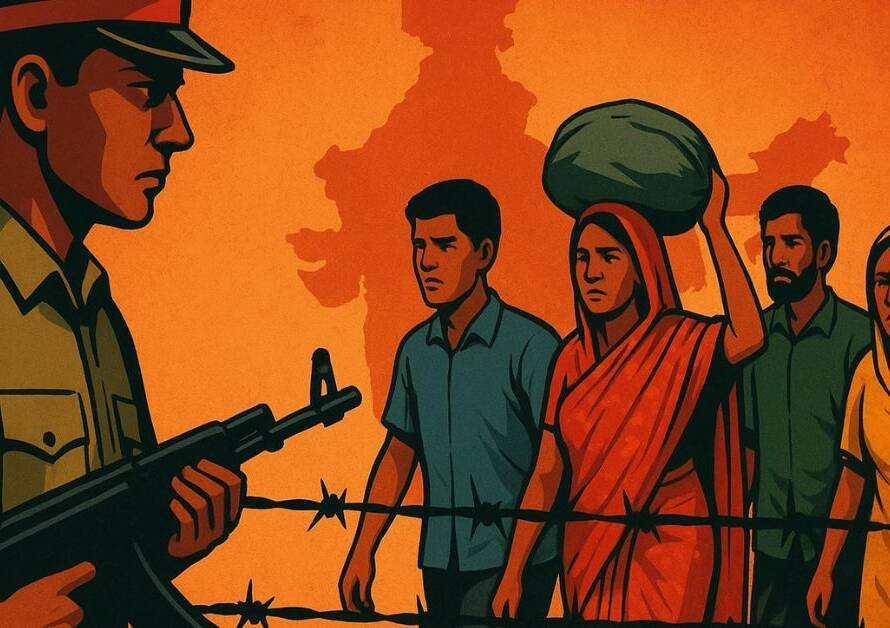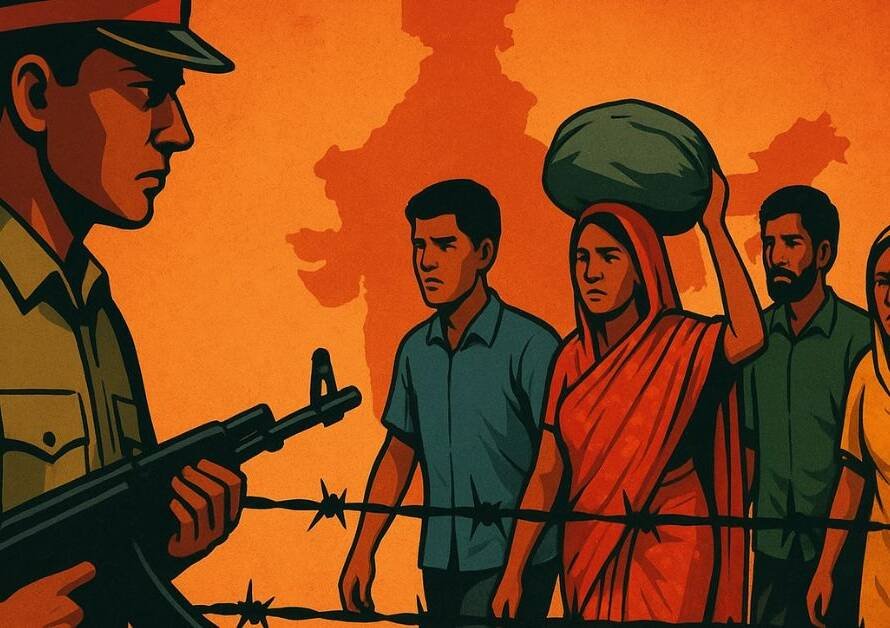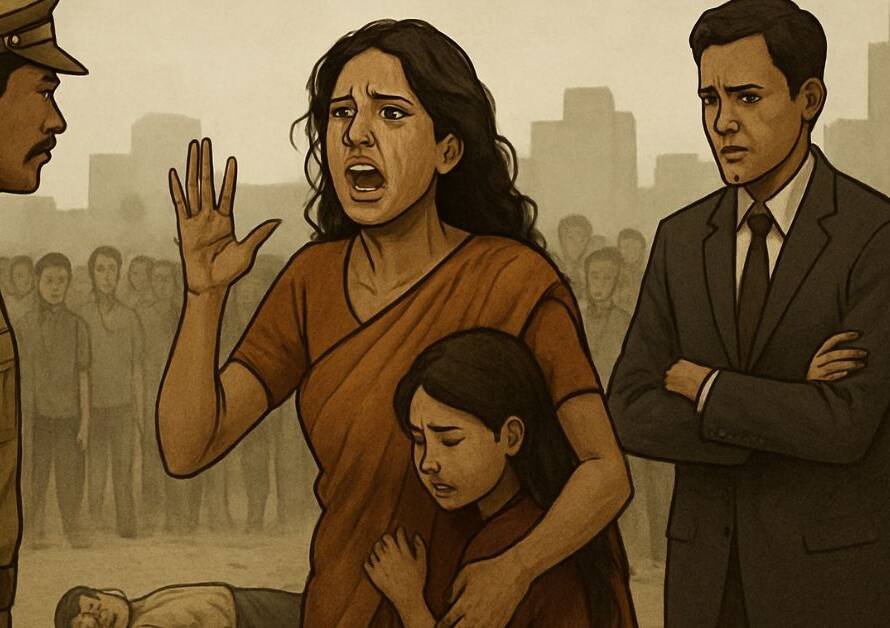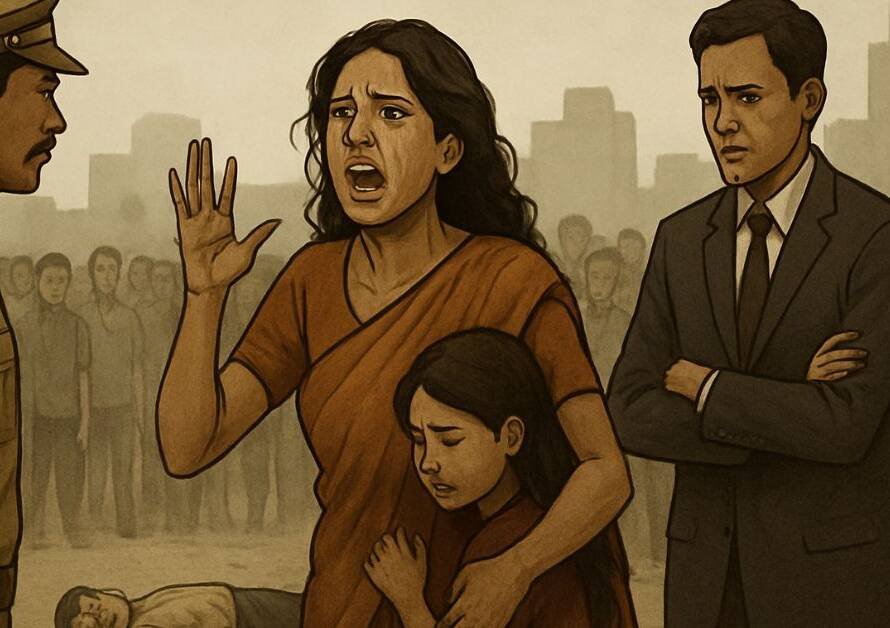The Congress, through its policies and legal amendments, had almost turned India into a Muslim nation, though it never made an official declaration. By embedding various provisions in the Constitution, they aimed—directly or indirectly—to weaken the majority Hindu society while granting special privileges to minorities.
Here are some key actions Congress took to weaken Hindu culture and religion:
Article 25: Through this, conversions were legalized, giving external forces an opportunity to alter demographics through religious conversions.
Articles 28 and 30: Article 28 denied religious education to Hindus, while Article 30 granted freedom to Muslim and Christian communities to run their religious institutions and provide religious education.
HRCE Act 1951: Through this act, the government took control of Hindu temples and their assets, stripping them of autonomy and independence.
Hindu Code Bill (1956): Divorce and dowry laws were implemented in Hindu society, yet Muslim Personal Law remained untouched, allowing Muslims to practice polygamy and increase their population.
Special Marriage Act (1954): This act facilitated marriages between Muslim men and Hindu women, leading to concerns like ‘love jihad.’
Forcible Inclusion of Secularism (1975): During the Emergency, the word “secularism” was forcibly added to the Constitution, turning India into a secular nation. This was seen as a deliberate move against Hindus.
Minority Commission Act (1991): This act established a “minority” definition in a secular nation, which fundamentally goes against the secular ethos. This promoted religious segregation and division.
Special Rights for Minorities (1992): Scholarships, jobs, and other benefits were given to minority communities, denying similar opportunities to Hindus.
Places of Worship Act (1991): This act legally prevented Hindus from reclaiming over 40,000 temples, denying them access to their religious sites.
Waqf Act (1995): Through this act, Muslims were given rights to claim any land, allowing them to seize Hindu land and become the second-largest landholders in the country.
Ram Setu Affidavit (2007): In an affidavit to the Supreme Court, Congress questioned the existence of Lord Ram, disrespecting Hindu faith.
Promotion of ‘Saffron Terrorism’ (2009): Congress tried to label Hinduism as an extremist religion by coining the term “saffron terrorism.”
Three Talaq and Burqa: Congress never considered burqa or triple talaq as extreme practices, yet they continuously intervened in matters concerning Hindu society.
Erosion of Hindu Rights: Under Congress rule, Hindus gradually lost their rights. They lost control over their religious institutions, education, and even their land rights.
Ideological Warfare: Just as Aurangzeb attempted to destroy Hinduism with a sword, Congress attempted to accomplish the same through the Constitution, acts, and bills.
Media Suppression: Those who raised such issues in the media were labeled as communal, saffron-clad, or devotees to suppress their voices.
The Fall of the Roman Empire: Just as the powerful Roman civilization fell due to internal conflicts, Hindu society is facing a similar crisis today.
Congress’s Rule: Congress rule has caused immense harm to Hindus. Now, the time has come for the Hindu society to become self-reliant and free, like Shivaji and Maharana Pratap.
Today, we must support Prime Minister Narendra Modi, who is capable of changing this situation. We must understand that unity is essential to protect Hinduism and the sovereignty of our country.
This is the time for us to awaken for the future of our families and society, and stop voting for Congress and regional parties that work against the existence of our religion.
Spread this important message as widely as possible so we can raise awareness within the Hindu society.
Jai Hind! Jai Shri Ram!
Relevant Examples & Case Studies
Uniform Civil Code in Goa
Context: Goa is one of the few states in India with a Uniform Civil Code (UCC) that applies equally across all religious groups. This framework promotes national integrity by ensuring that personal laws do not divide citizens based on religion.
Impact: UCC in Goa has been successful in reducing communal disparities in legal matters such as marriage, divorce, and inheritance, showing that such laws can be implemented effectively.
Key Takeaway: Advocates for a broader UCC across India argue that it would ensure equality and curb religious divisions in civil matters, potentially strengthening national unity.
Temple Autonomy Movement in Tamil Nadu and Karnataka
Context: Movements have been initiated in Tamil Nadu and Karnataka to reclaim Hindu temples from state control and restore them to the Hindu community for better governance and resource management.
Impact: These movements highlight issues surrounding government oversight, such as mismanagement and diversion of funds, which many argue would be resolved if temple administration were handed back to the Hindu community.
Key Takeaway: Advocating for temple autonomy could empower Hindus to manage their resources independently and reinvest in community welfare, education, and cultural preservation.
Rise of Madrasa and Church-Based Education vs. Hindu Institutions
Context: Religious institutions like madrasas and convent schools receive government aid to provide faith-based education. Conversely, Hindu gurukuls struggle with funding and often operate independently without government support.
Impact: This disparity has led to a perceived lack of equal opportunities for Hindu students to access culturally-aligned education in the way Muslim and Christian students do.
Key Takeaway: Establishing government-funded Hindu educational institutions or providing equal subsidies to gurukuls can help maintain cultural balance in religious education.
Case Study: Ram Janmabhoomi Movement
Context: The Ram Janmabhoomi movement was a decades-long struggle for reclaiming a site of significant religious importance to Hindus, culminating in the 2019 Supreme Court verdict allowing the construction of a temple.
Impact: This case brought attention to Hindu cultural reclamation and established a precedent for similar heritage sites. It unified a large section of the Hindu community, demonstrating the power of shared cultural aspirations.
Key Takeaway: This case highlights the importance of mobilizing peaceful, democratic advocacy for reclaiming and preserving cultural heritage.
Anti-Conversion Laws in Madhya Pradesh, Uttar Pradesh, and Gujarat
Context: Several states have passed laws against forced or induced religious conversions, aiming to curb cases of coercive conversion practices.
Impact: These laws provide legal recourse for communities facing demographic pressures due to aggressive conversion tactics, particularly in tribal and rural areas.
Key Takeaway: Strengthening anti-conversion laws across more states, and ensuring they are enforced fairly, can help preserve cultural identities while respecting individual religious freedom.
Next Steps: Strategic Actions for Cultural Preservation
Advocacy for a National Uniform Civil Code (UCC)
Objective: Push for a nationwide Uniform Civil Code to establish one set of civil laws for all citizens, regardless of religious identity. This would create a fair legal framework to minimize community-based divisions.
Action Plan: Engage with lawmakers, host public discussions, and gather support from diverse communities to show widespread demand and benefits of a UCC.
Form a Hindu Cultural Council
Objective: Establish a governing council to oversee Hindu cultural and educational institutions, akin to the Muslim Personal Law Board or Waqf Board, providing a collective voice and administrative support.
Action Plan: Promote the idea within Hindu organizations, draft a proposal, and work with legal experts and community leaders to ensure the council’s establishment and effective functioning.
Promote Equal Funding for Hindu Educational Institutions
Objective: Advocate for government-backed funding or subsidies for Hindu schools and gurukuls to maintain cultural parity in religious education.
Action Plan: Petition the government to allocate educational funding for Hindu institutions, potentially through public interest litigations (PILs) or via direct dialogue with the Ministry of Education.
Temple Management Reforms
Objective: Push for reforms that transfer temple management from government control back to the Hindu community, allowing local Hindu organizations to manage funds and resources.
Action Plan: Run awareness campaigns to build public support, engage legal experts to draft legislative reforms, and gather petitions to lobby state governments for change.
Encourage Interfaith Dialogue and Awareness Campaigns
Objective: Host forums for interfaith discussions to dispel misconceptions and foster understanding about Hinduism, advocating unity and collective pride in India’s pluralistic heritage.
Action Plan: Organize seminars, invite scholars, and use media platforms to highlight positive aspects of Hindu culture, encouraging mutual respect among diverse communities.
Historical Awareness and Education Programs
Objective: Integrate educational content in schools that highlights India’s vast, diverse history, including Hinduism’s contributions to art, science, and philosophy.
Action Plan: Work with education boards to include balanced, accurate cultural education in school curricula and support the development of educational content in public and private institutions.
Empowering Local Hindu Communities
Objective: Strengthen local Hindu communities through grassroots initiatives like social welfare programs, educational workshops, and self-sustainability training.
Action Plan: Partner with NGOs to provide resources for these initiatives, focusing on community empowerment, particularly in rural and tribal regions where cultural identity is often vulnerable.
Legal Defense Fund for Hindu Rights
Objective: Establish a legal fund to defend Hindu rights and temples in courts, ensuring that temples and Hindu properties are protected legally.
Action Plan: Gather contributions to fund legal battles, provide resources for legal representation, and educate communities on their rights concerning religious freedom and property ownership.
Conclusion
Preserving India’s diverse heritage requires both unity among Hindus and cooperative engagement with all communities. Through peaceful advocacy, legal action, and interfaith dialogues, Hindus can preserve their cultural legacy while contributing positively to a harmonious, pluralistic society. The key lies in creating fair, secular frameworks and fostering awareness across communities about India’s collective heritage and diversity.







